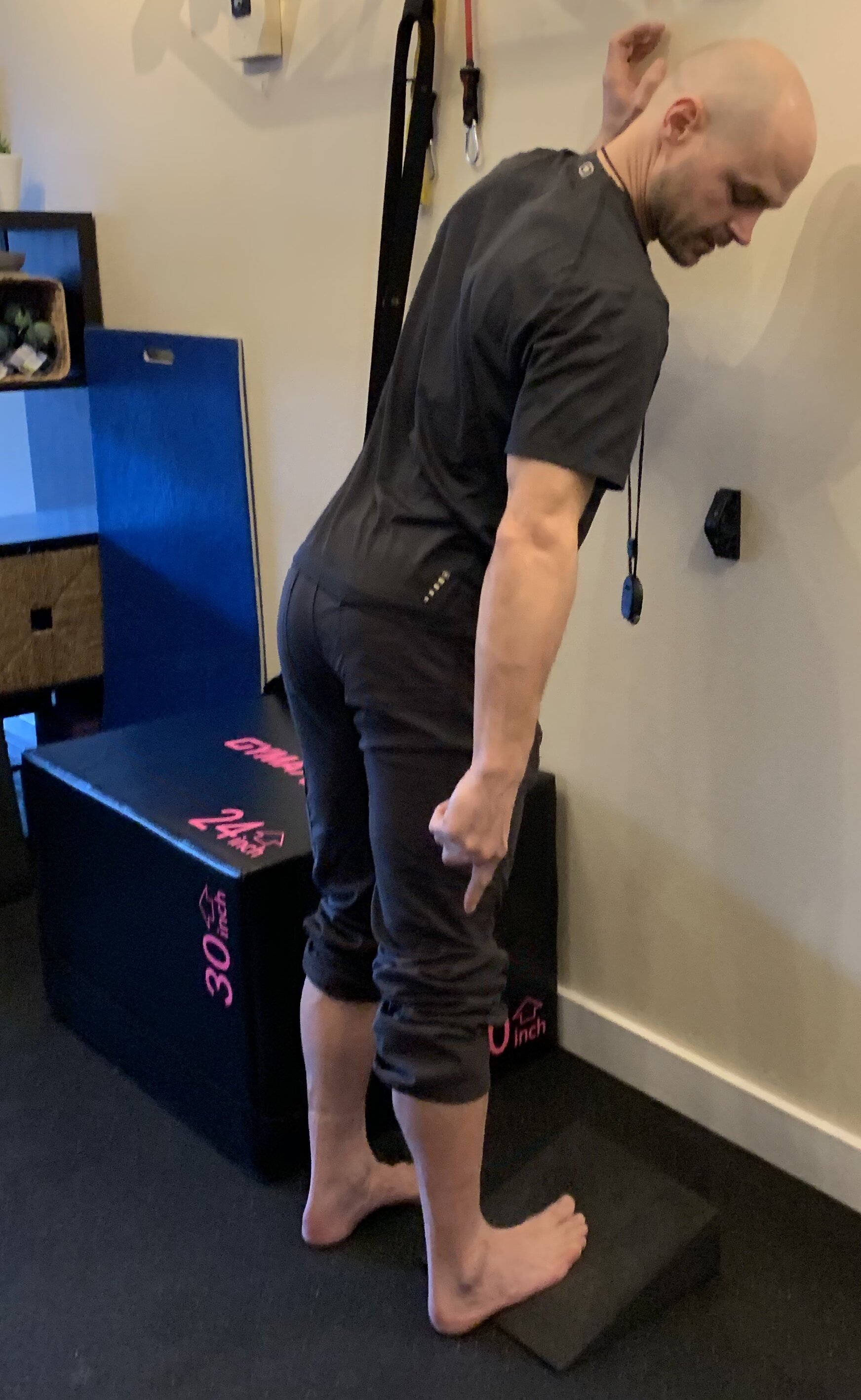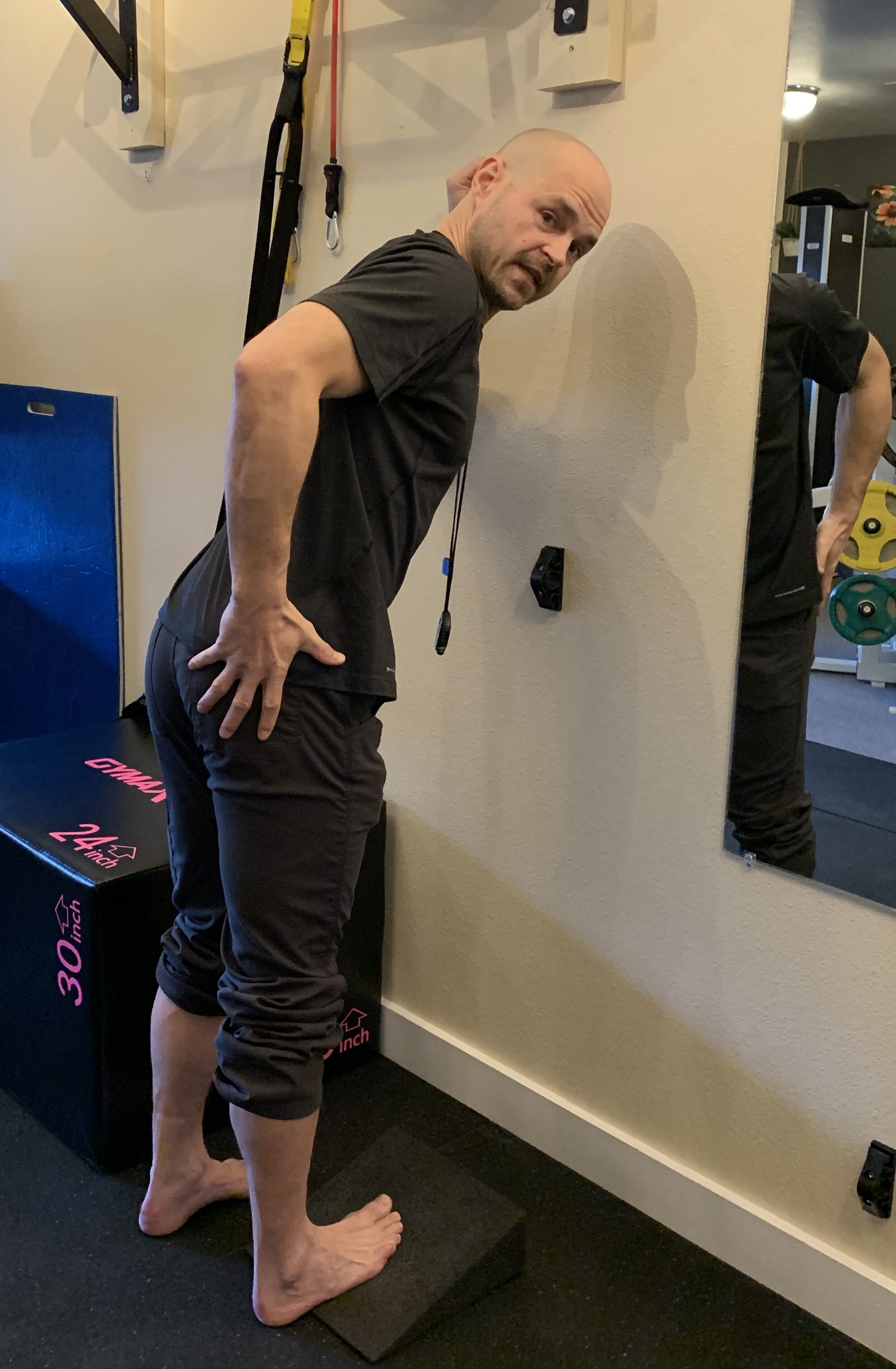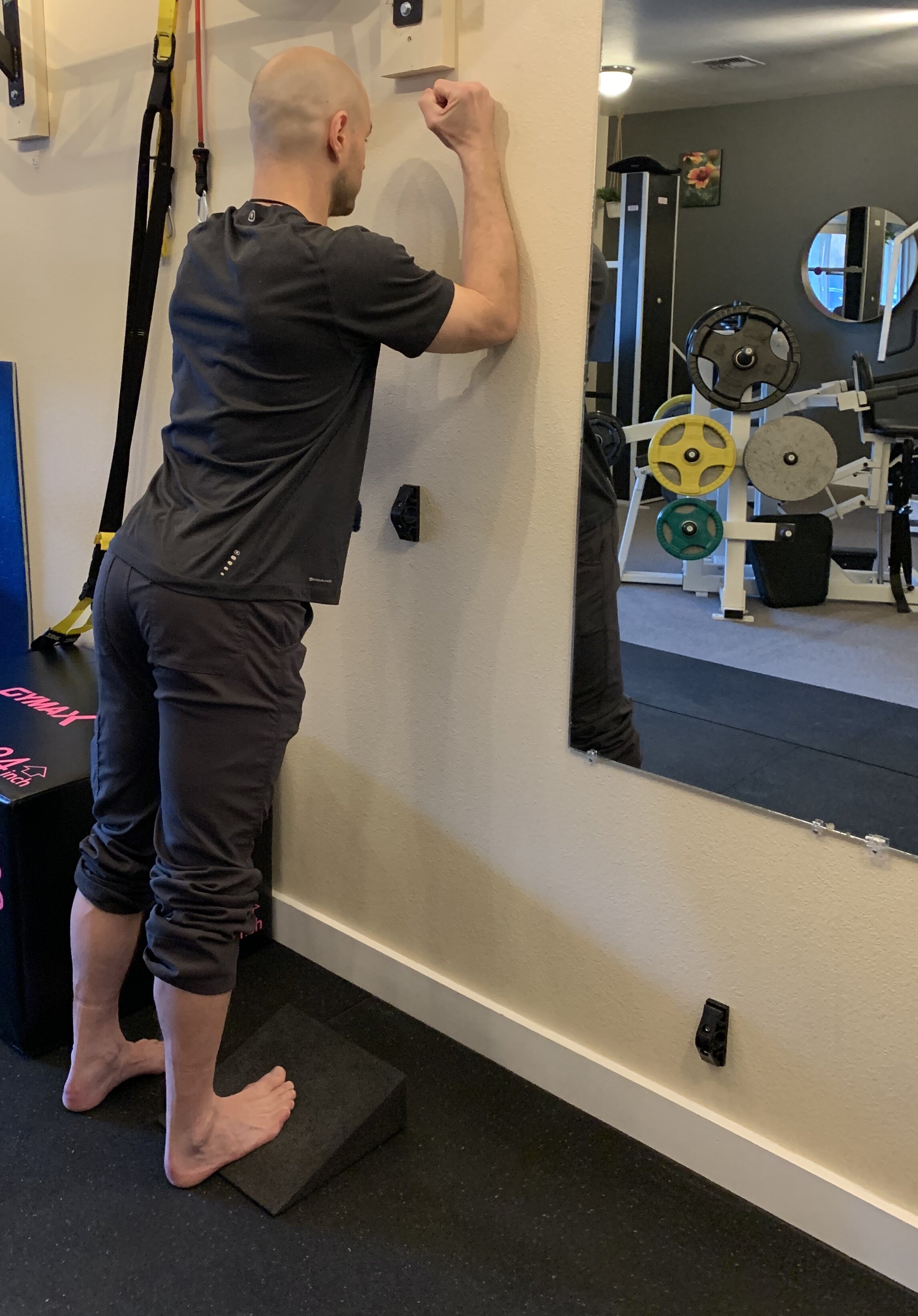Calf Stretch with Wedge
The ankle is a strong, adaptable, and complex structure designed for mobility. Often, one’s health, comfort, and general athletic performance can be positively impacted by maintaining optimal function of this critical “link” in numerous kinetic chains .
Stretching the muscles that cross the the back of the right ankle
Stand about 2 feet away from a wall with hips and shoulders squared to the wall.
Place a foam wedge slightly in front of the right foot with the thick side closest to the wall.
Place this foot partially onto block with 2nd toe aimed straight forward.
Shift weight onto the other leg and use the wall to assist with balance.
Work towards straightening the right leg while contracting the right glute.
Look for a 30-60 second mild, pain-free stretch on the back of this leg.
Reverse footing and perform the above actions substituting “left” for “right”to stretch opposite leg.
Pain is never part of this protocol.
Basic Active Stretching
Muscles often become tight in relation to other muscles suffering a relative change in tone. In the lower leg the muscles along the back of the calf plantar flex the ankle when they contract. A foot in a 6” high heel is in a position of Plantar Flexion. The muscles that perform Dorsiflexion, the functional opposite of Plantar Flexion exist along the front of the calf. When the muscles that plantar flex contract, the muscles that produce dorsiflexion are signaled to relax during a process known as reciprocal inhibition.
Using the foam block AND Reciprocal Inhibition to actively stretch the back of the calf
Return to the start position for stretching the right calf.
Follow previous instructions to achieve a stretch along the back of the right calf.
Now actively contract the calf muscles with moderate force without producing a change in position.
Hold this contraction while taking two slow, deep breaths.
Take a third breath in, release this contraction and contract the opposite muscles, the muscles of dorsiflexion during your exhale. This will send a neurological signal to further relax your calves.
This process can be repeated 2-3 times.
Pain is never part of this protocol.



